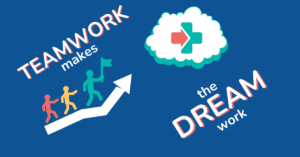
The LEARN Early Project: Providing Anaphylaxis and Food Allergy Education For Head Start Centers
The Learn Early Project was initiated by collaborating with Head Start Centers in Connecticut and Louisiana. We were able to identify 17 Head Start programs across five distinct entities. The 12 directors/health care managers completed Allergy Preparedness Questionnaires. These included demographic questions as well as procedural questions regarding food allergy education for staff, management of epinephrine auto-injector training and storage, and food service. Meanwhile, 68 staff members completed the Food Allergy Knowledge Test. This is a standardized tool developed by Dr. Amy Hahn et al. to measure food allergy knowledge. Additionally, staff members completed questionnaires surrounding their comfort level regarding food allergy and anaphylaxis, as well as barriers they were able to identify that impacted their ability to provide optimal care. Once all surveys were completed, focus groups were held with the directors/health care managers to review. In addition to gathering data, we were able to provide food allergy education classes for both staff and parents. We offered evidence-based epinephrine training and anaphylaxis management for the staff at each center. With the help of the Food-Equality Initiative, we were able to provide allergen-free food allergy snack boxes to families of children with food allergies.
Over the last few years, there has been increasing evidence demonstrating the disproportionate impact that food allergy has on Black, Hispanic, and low socioeconomic status children. This has led to a drive to better understand why this occurs and how allergists can address these disparities. Unfortunately, allergists have limited time spent with children and their families to provide education and support. We recognize that most children spend a significant amount of time outside of their homes while at preschools and daycares. With this knowledge, we anticipate that an area that has not been investigated is looking at the role early childhood educators may have in managing children’s food allergies and anaphylaxis. Because of this, we felt it was crucial to partner with Head Start centers to better understand the barriers they face in ensuring these children are safe. In doing so, we intend to use the results of this investigational project to create an implementation project to address these barriers.
Upon completion of surveys, we were able to identify a multitude of areas of potential concern for food-allergic children. For instance, only 23% of classrooms identified that there was a food allergic child within the classroom. Seldom did centers have immediate access to a registered nurse or any medical provider. Although centers often provide meals, frequently they are delivered to the classroom from the cafeteria and do not have labels to double-check for allergens. Only 21% of children always kept their epinephrine auto-injectors at school. While most centers implemented action plans for food allergies, only 58% of centers practice these. Regarding the Food Allergy Knowledge Test, among the 68 staff who completed this, the average score was 72.11 (out of 100). The most common questions answered incorrectly included the identification of anaphylactic symptoms and epinephrine use. When asked how comfortable they felt in managing anaphylaxis and food allergies, staff answered 8.47/10. Despite this, the standard deviation of 7.53 demonstrated that there was significant variability in how comfortable staff felt. Some of the areas Head Start staff felt could be improved included access to stock epinephrine, evidence-based food allergy training, education regarding types of epinephrine auto-injectors, and access to a healthcare advocate. Based on the results of this investigational study, we found there were many areas we could potentially improve the support we provide to Head Start centers. We are hoping by beginning to address these barriers, we can create an approach that can be used nationwide to improve upon existing disparities.




